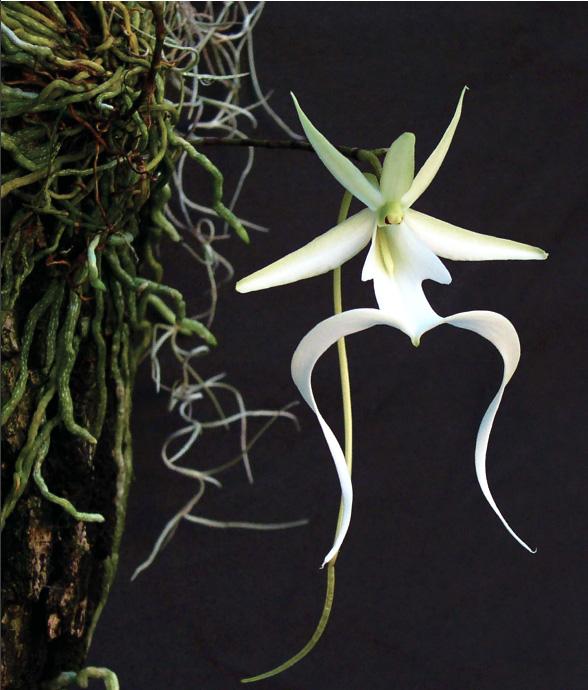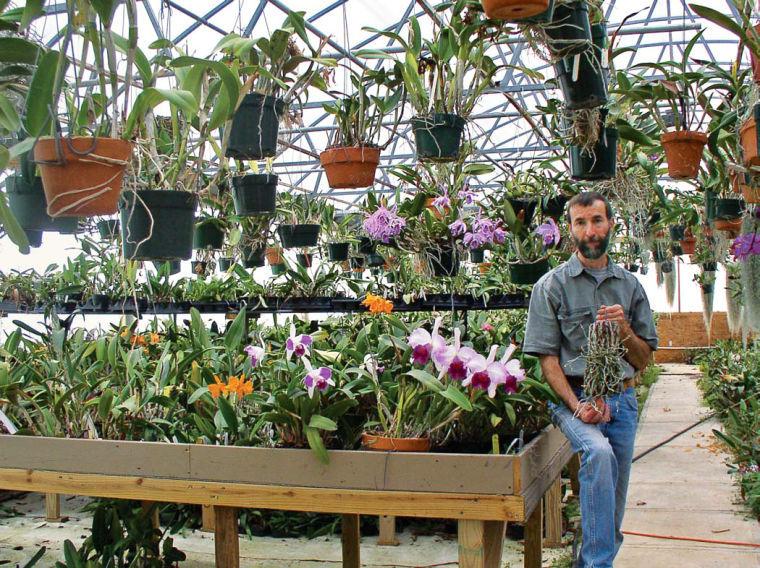Ghost orchids, the extremely rare flowers known for their pale ethereal bloom, had never before been bred in captivity. Orchid enthusiasts pursue the plant with such fervor they had even attempted to grow them using a procedure similar to invitro fertilization, and many are collected illegally. However, Keith Davis, who graduated from NCSU in 1979, has recently discovered how to grow and protect the endangered flower.
Davis’ interest in orchids began after a fortunate find at a yard sale. Davis was able to purchase 12 orchids for $1 apiece to fill the greenhouse at the high school he was teaching at in Corpus Christi Texas. Unfortunately, all 12 orchids died within a few weeks.
That initial purchase and letdown led Davis to encounter other growers and different species of orchids, which furthered Davis’ curiosity about the plant. Orchids vary drastically in size and shape – some orchids are literally microscopic while others are considerably large.
Ghost orchids, surprisingly enough, do not have leaves. Instead, the roots of ghost orchids contain the chlorophyll to perform photosynthesis. Therefore, the roots must be kept above ground and so ghost orchids are typically found growing on the sides of trees.
While ghost orchids grow on other plants, they are not considered parasitic; rather, they are epiphytic. A parasite feeds off of the host for nutrients while epiphytes only use the host for support.
Davis encountered many difficulties in his pursuit of the ghost orchid. Their rarity makes obtaining seeds a daunting task, and even finding the seeds does not guarantee success.
Davis’ mindset when working with the ghost orchid helped him with his breakthrough Davis said that he told himself that if something grows in nature, there has to be a reason. If that reason can be found, then it can be applied in a lab. Davis’ determination paid off, and after years of research he unlocked the flower’s secret.
“There are long periods of dry weather where they grow naturally,” Davis said in his article A Ghostly Pursuit. “The plants survive because roots are buried in the moss and lichen on the host tree. I later discovered that this dry period is vital to getting the plants to bloom.”
Davis used this discovery in order to choose his host plant, the mockernut hickory. Not only did the hickory bark prove to be a durable substance to grow the orchid on that would not rot as quickly as other barks, the moss growing on the bark aided the survival of the orchid.
Like most plants, the first year is a vital stage of development for ghost orchids, and the plants are easier to manage afterward. “After their first year, ghost orchids do very well in their environments and are easy to maintain ” Davis said. “The first year is easily the determining factor – many of the plants are so fragile that less than one percent tend to survive.”
Davis used Spanish moss to help form a unique microen vironment around the roots of the ghost orchid, which helped them get through that first year. Ghost orchids also require a two month dry period to bloom where they receive very little moisture and Spanish moss proved to be an excellent source of that specific amount of moisture.
In 2007, Davis entered his ghost orchids into a competition held by the American Orchid Society. The AOS awarded Davis’ orchids the highest level of award possible, the First Class Certificate.
Davis has written several articles on ghost orchids that delve into the details of his research, many of which can be found online.
Keith Davis stands with his ghost orchid. He is the first person to successfully breed the flower in captivity and was awarded the First Class Certificate from the American Orchid Society for his efforts and research.









